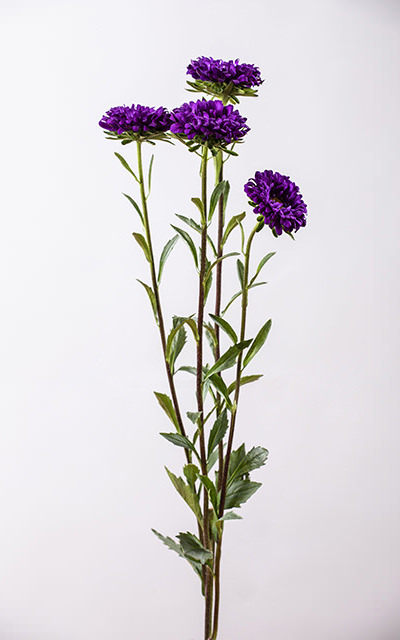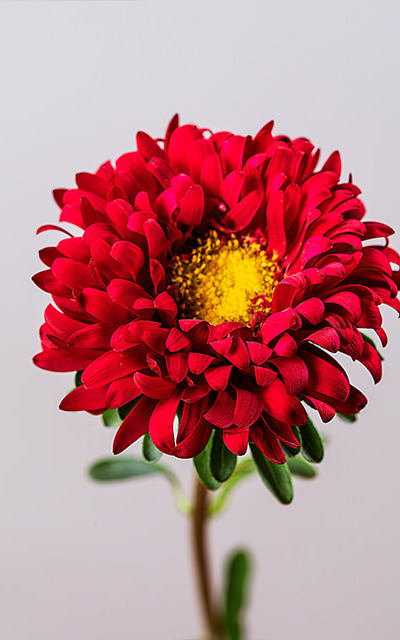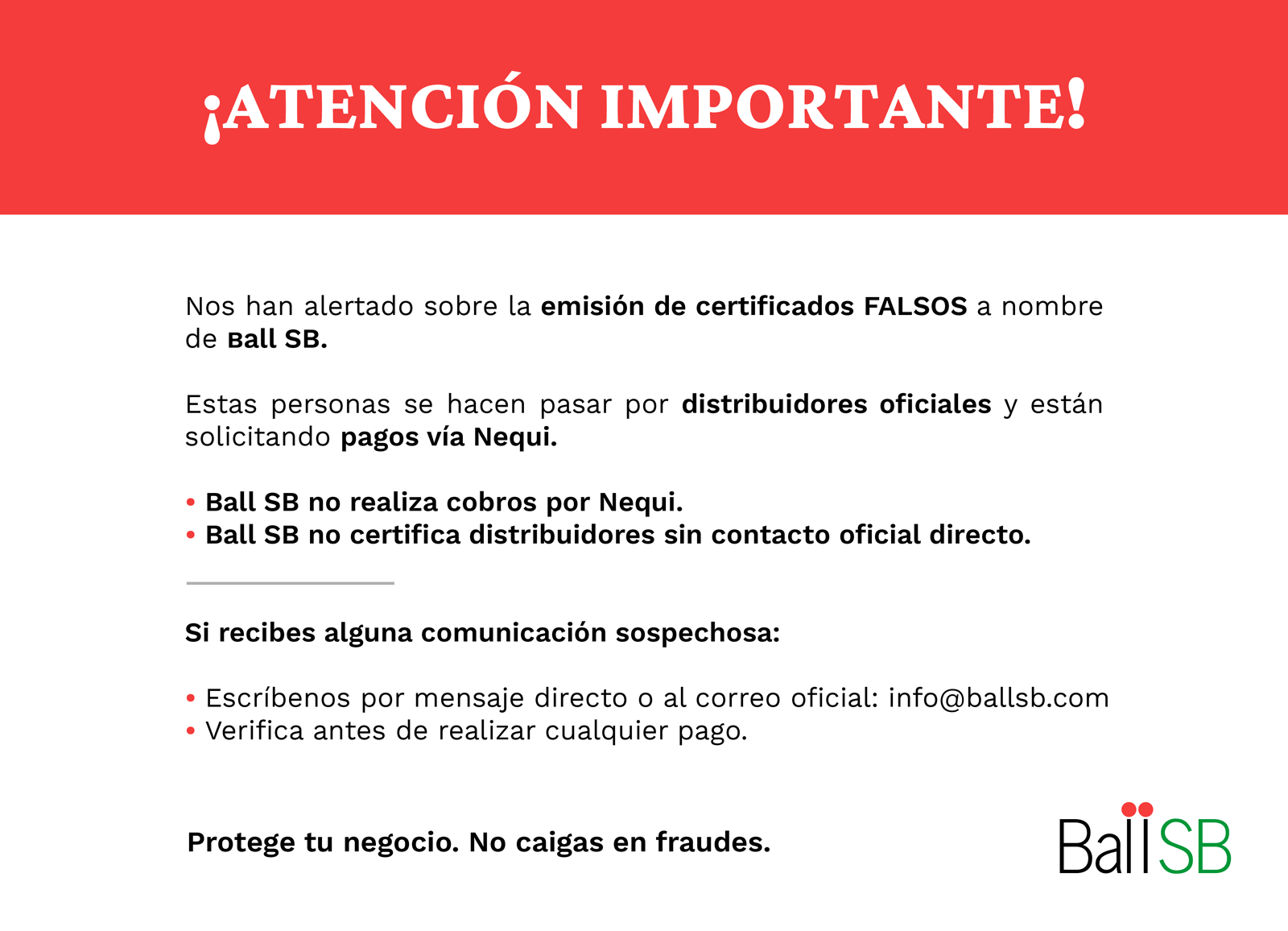Fujimi
- Medium sized Aster, which is more resistant to fusarium than other Asters
- Comes in Coral, the pantone of the year
- Bred to grow upright before branching and can be planted in higher density than other asters
Suite (2)
Purple, Scarlet
Culture Tips
CROP TIME
From planting to harvest: 12 -13 weeks
STEM HEIGHT
75 cm
PLANTING DENSITY
80 plants m2 net (7 plants ft 2net)
PRE-PLANTING
Soil: Well drained soil, very well leveled surface, no clusters, at least 25 cm (10 in.) deep.
pH: 5.5 to 6.5
Netting: 2 levels
ADDITIONAL LIGHT
Start 7 days after transplant when the plants have true leaves. Long day conditions favors the growth of the flower buds, but the final flower
development is hastened under short days conditions. Stop the additional lightning when plants are 40 to 45 cm (15 to 17 in) high or approximately in week 9.
Add light considering a critical 14 hour photoperiod, although 16 hours is optimal. Light can be added continuously or by pulses up to 4 additional hours at night. 6 foot-candle is required.
DISBUD
8-9 weeks after planting, remove flower bud when a well defined bud appears. This helps shape the spray.
IRRIGATION
Apply an average daily volume of 5 to 5.5l/m2/day according to the soil’s humidity evapotranspiration conditions and the organoleptic evaluation.
Excess irrigation can cause pathogens development and physiological desiquilibrium.
FERTILIZATION
Excess of nitrogen can cause the plants to be susceptible to Botrytis. A general formula can be the following:
N: 120 ppm , P: 50 ppm, K: 150 ppm
Ca: 120 ppm, Mg: 50 ppm, S: 50 ppm
Fe: 2 ppm, Mn: 2.5 ppm, Cu,: 0.2 ppm
Zn: 0.2 ppm, B: 0.2 ppm.
HARVEST
Harvest when 50% of flowers are colored or according to client’s requirements.
POSTHARVEST TREATMENT
Hydrate stems for 2 hours in STS solution with 6 cc/l dosis. Then, hydrate in Crhyslar professional 2 solution (6 cc/l) for 12 hours in a cold room.
PESTS & DISEASES
•Aphids
•Thrips
•Leaf miner
•Fusarium oxysporum. (It is recommended to rotate the crop)
•Botrytis
•Very susceptible to phyto-toxicities.





